Swimmers have been warned to stay away from a dolphin ‘targeting women in wetsuits’ over fears he could be dangerous to humans.
Reggie the dolphin was first spotted in Lyme Bay, Dorset, on August 3, excitedly playing with a family and asking for belly rubs, with the viral footage attracting people to the coastline.
But experts say that Reggie, a solitary male bottlenose dolphin, could become aggressive and attack if he is exposed to more interaction with humans.
Reggie has already been seen with gashes that are thought to be caused by a boat propeller.
The dolphin has also been accused of trying to drown’ two female swimmers, who were rescued by kayakers after the sea mammal tried to jump on one of them, repeatedly pushing her head under the water.
Footage shows the swimmer saying: ‘It scared me to death! Oh my goodness!’ before being pushed under the waves on August 14.
Rhys Paterson, 32, revealed how he was forced to intervene, along with another boater, after Reggie began jumping on top of a woman swimming off the beach in Lyme Regis – pushing her head repeatedly under the water.
Mr Paterson, a development director from Lyme Regis, said the filmed incident was not the only confrontation and the dolphin appeared to be ‘targeting women in wetsuits’.
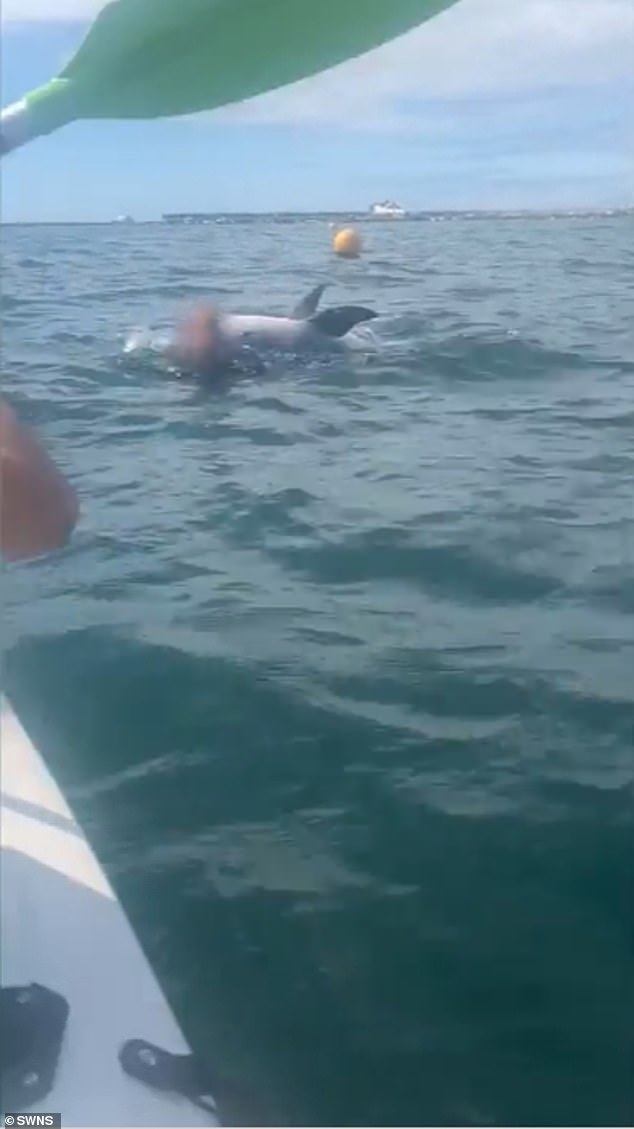
New footage from a kayak has emerged of Reggie apparently targeting swimmers in Dorset bay
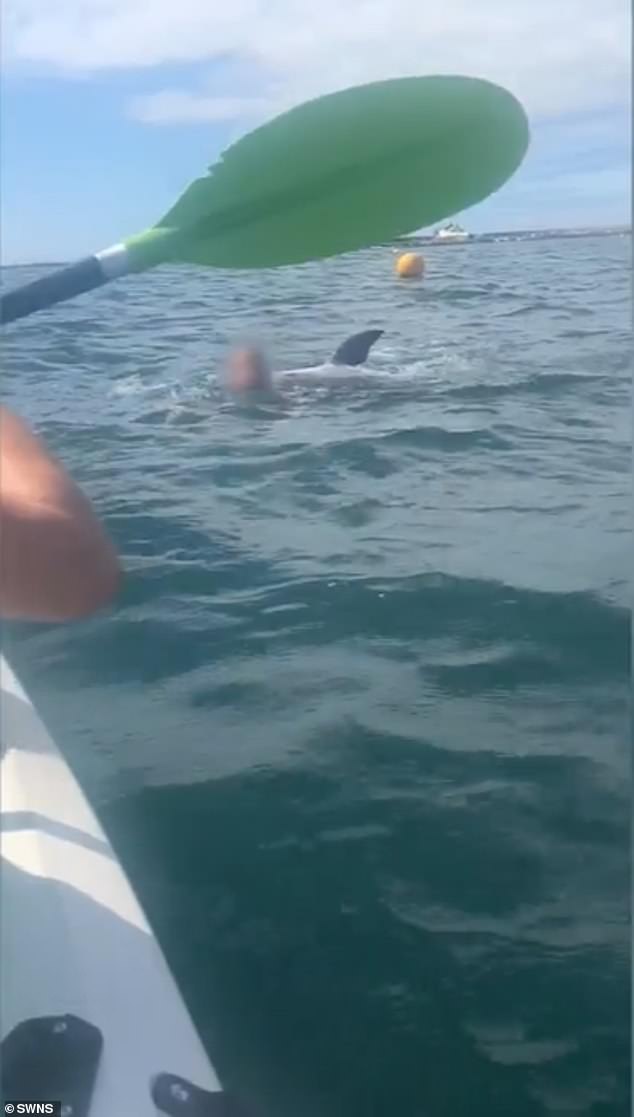
New footage from a kayak has emerged of Reggie apparently targeting swimmers in Dorset bay
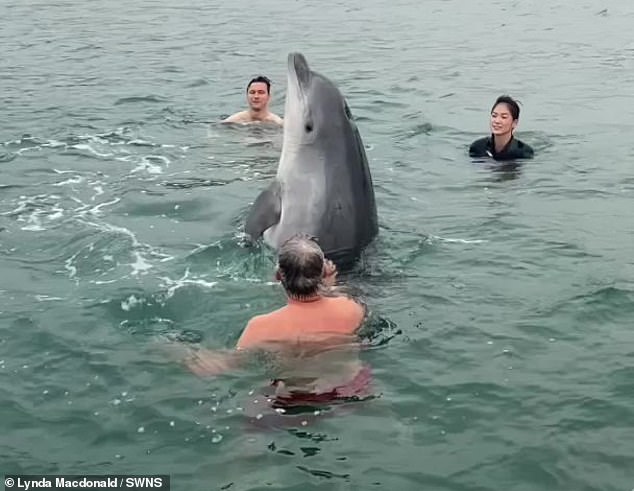
The solitary bottlenose dolphin, believed to be a young male, has gone viral after adorable footage emerged of it excitedly playing with a family and asking for belly rubs in Lyme Bay, Dorset, on August 3
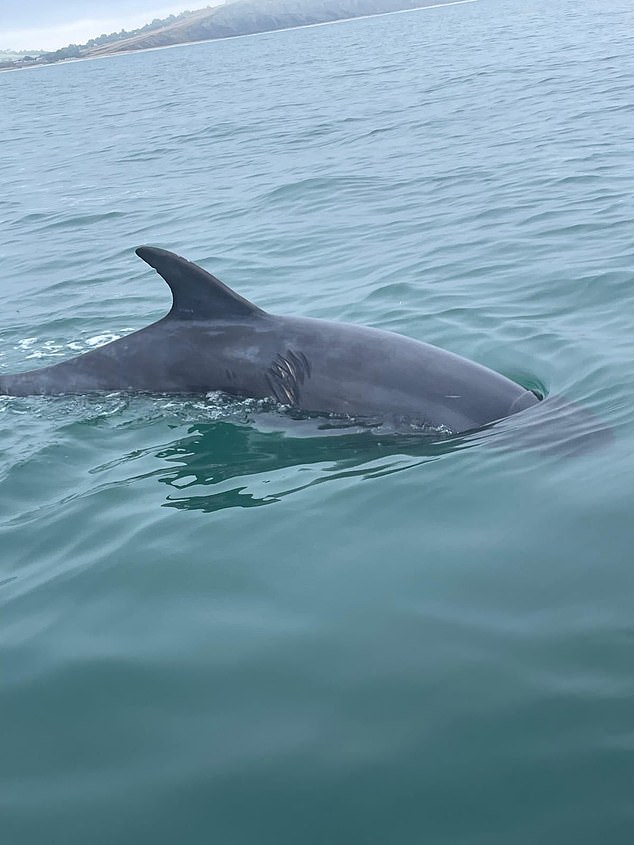
The dolphin seen frolicking with swimmers in Lyme Bay has nasty injuries, likely caused by a boat propellor
‘We saved two swimmers who were fairly deep, where the dolphin kept jumping on them,’ he said.
‘The dolphin was basically drowning this woman – it kind of jumped on her back four times.’
Describing how he and his brother, Gareth, came across the scene, Mr Paterson said: ‘We had been following the dolphin for a little bit, because obviously, it’s quite a local legend at the minute.
‘But when we realised it wasn’t playing it was quite a big shock.
‘People need to understand that it’s not an amusement arcade. It’s a wild animal. It can snap all of a sudden if it wants to.’
It comes after the Marine Management Organisation (MMO) warned the public to keep away from the lone dolphin.
The organisation said human interaction can make dolphins lose their natural wariness, leading to ‘injury or death’.
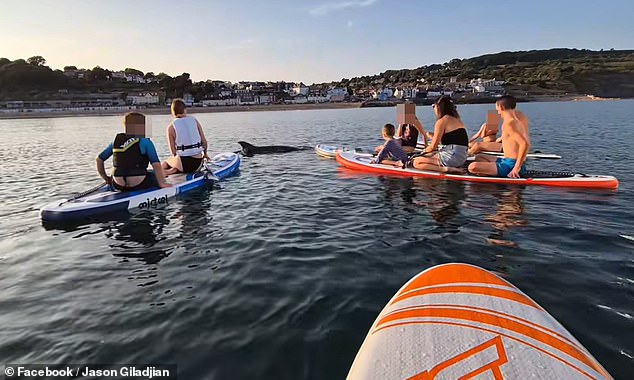
New footage emerged over the weekend showing ignorant tourists paddling next to viral dolphin Reggie, with young children in the water
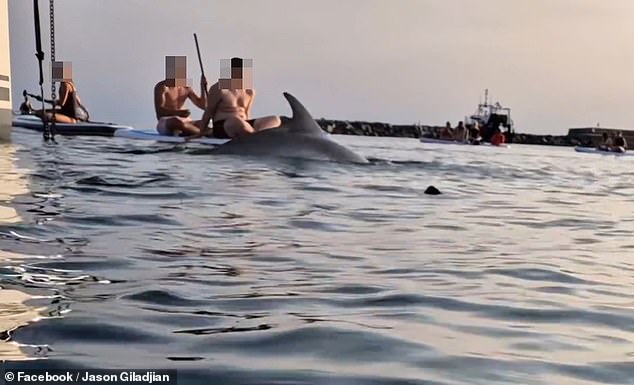
The tourists have ignored warnings to stay away from the bottlenose dolphin, who could harm or even kill someone
Jess Churchill-Bissett, head of marine conservation (wildlife) at MMO, said: ‘Repeated human interaction inevitably disrupt their natural behaviours, increasing stress and potentially altering their temperament.
‘Once habituated to humans, dolphins can lose their natural wariness, a change that can be fatal. This is something we could already be seeing in Lyme Bay.
‘They are also known to have become aggressive in cases and have attacked and injured people.’
The Whale and Dolphin Conservation said: ‘We have to reiterate: NEVER swim with dolphins, in the wild or in captivity.
‘It is not good for them or us. They are powerful, expert swimmers. Respect their space. Admire them from a distance.’
Liz Sandeman, co-founder of the Marine Connection Charity, warned: ‘This is the worst case of a dolphin becoming rapidly habituated to close human interaction in 20 years in the UK, with risks to the safety of the dolphin and people in the water with him likely increasing over time.’
It comes after footage has emerged over the weekend showing ignorant tourists paddling next to Reggie – with young children seen in the water while adults sit on their boards.
Crowds of holidaymakers have flocked to the waters in recent weeks for a chance to get close to the dancing dolphin.
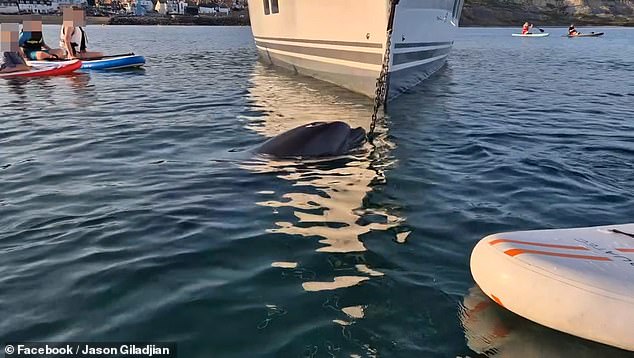
The dolphin, who is visibly injured and has gashes on its side, was seen circling around tourists on Friday evening
The new video, posted on Facebook, was captured on Friday evening and shows the animal circling around and swimming dangerously close to humans.
One commenter on the video warned the dolphin is probably showing an increased interest in people due to hunger.
‘When animals become interested in us it normally means they are hungry and malnourished and in search of food,’ they wrote.
Another person, who witnessed the tourists crowding around Reggie, wrote: ‘We went down last night and watched from the shore. We were shocked to see so many paddleboarders out there (around 20) and they were all following the dolphin and not leaving him alone.
‘Yes it’s magical for everyone to be up close but seriously have a word with yourselves.’
The dolphin is believed to have arrived in February but from May, the MMO directly observed people intentionally approaching the mammal too closely.
Experts and cetacean charities agreed collectively to name the dolphin Reggie, the Mail previously revealed.
Bottlenose dolphins are native to Britain and there are estimated to be 700 around the coast, usually swimming in pods. They reach up to 13ft in length and can weigh up to 650kg.
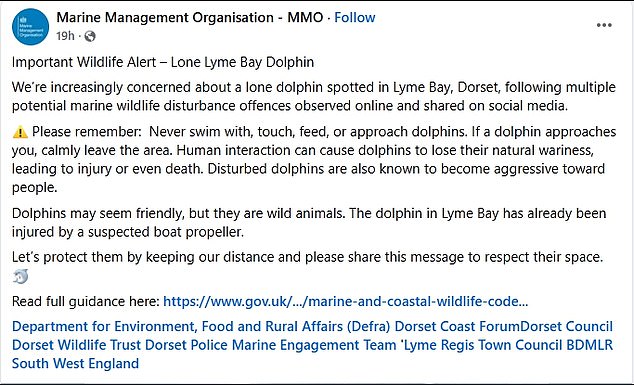
Marine Management Organisation shared concerns for the safety of the sea creatures and urged tourists to stay away from the animals in a recent Facebook post
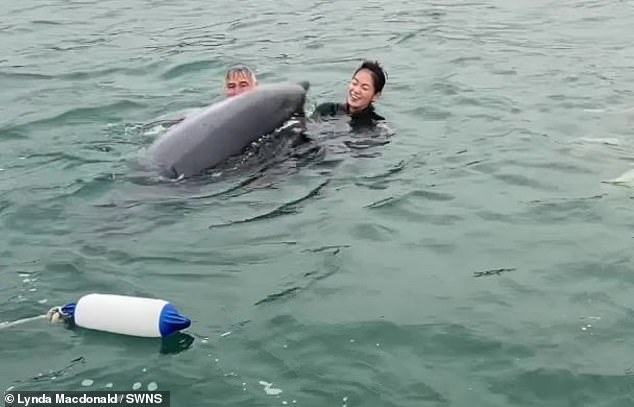
The playful dolphin appeared to dance in the water as it performed for its awestruck audience
Dolphins, along with whales and other porpoises, are protected by law under the Wildlife and Countryside Act 1981 and approaching or recklessly disturbing a dolphin can result in up to six months in prison as well as an unlimited fine.
Lucy Babey, director of programmes for UK marine conservation charity ORCA, told the Mail that although dolphins may elicit fun and excitement on the surface, they pose a big risk to humans.
She said: ‘They are powerful marine mammals and have been known to seriously injure people, even if unintentionally through a thrash of the tail or butting people with their beak.
‘In some case the dolphins behaviour has escalated, become erratic and more serious injuries have occurred. There have been incidents around the world where the dolphin’s behaviour has escalated to harassment and people have unfortunately been killed.
‘Unfortunately these dolphins can become habituated through prolonged human interactions which increases the risk of injury and brings about welfare concerns for the animal. There are several cases where the dolphins sought out boats, associating them with humans, but sadly resulting in propellor injuries and death.’











